Dutch rabbits originated in the 1830s and are descendants of the Petite Brabancon, which originally came from the region of Flanders.
They were originally bred for meat but looking at these cute little animals; it is no wonder that we now keep them as pets.
Traditionally, they had a black base coat with white markings, but breeding has introduced additional colors into the line.
They are great around children, but young children may need more adult supervision around them.
Dutch rabbits are small rabbits, and extremely cute too. They are predominantly white with a colored base coat giving them a distinct look that sets them apart from other breeds.
They are calm, gentle, and easy-going, making them perfect pets for most houses. They are great around children, but young children may need more adult supervision around them.
READ MORE: Everything About Holland Lop Bunny
Table of Contents
Dutch Rabbit Color & Looks

Dutch rabbits are small and compact. They have a rounded body which only adds to the cuteness of this breed.
Their body is compact, and they have a rounded head with short ears that stick straight up in the air.
Their ears are broad and give an alert look. They have small, piercing eyes which show intelligence.
The coat of a Dutch rabbit is short and glossy. Spotting a Dutch rabbit is easy due to the markings on their coat. They are almost always a combination of two colors, and the pattern is always the same.
Spotting a Dutch rabbit is easy due to the markings on their coat.
The ears, cheeks, and rump are usually the darker of the two colors, with a band of white from the top of the shoulders to the belly, white legs, and a wedge of white fur tapering upwards from the neck to the middle of the ears. This tapering part is known as the ‘Blaze.’
The dark part of the rabbit can come in a variety of colors. Dark brown, blue-gray, chocolate and brown are all common colors.
READ MORE: Everything About the Mini Rex Rabbit
How Do I Care for a Dutch Rabbit?
Brushing the coat once a week will keep it in optimum condition, though, like most other bunny breeds, the Dutch rabbit goes through a seasonal molt.
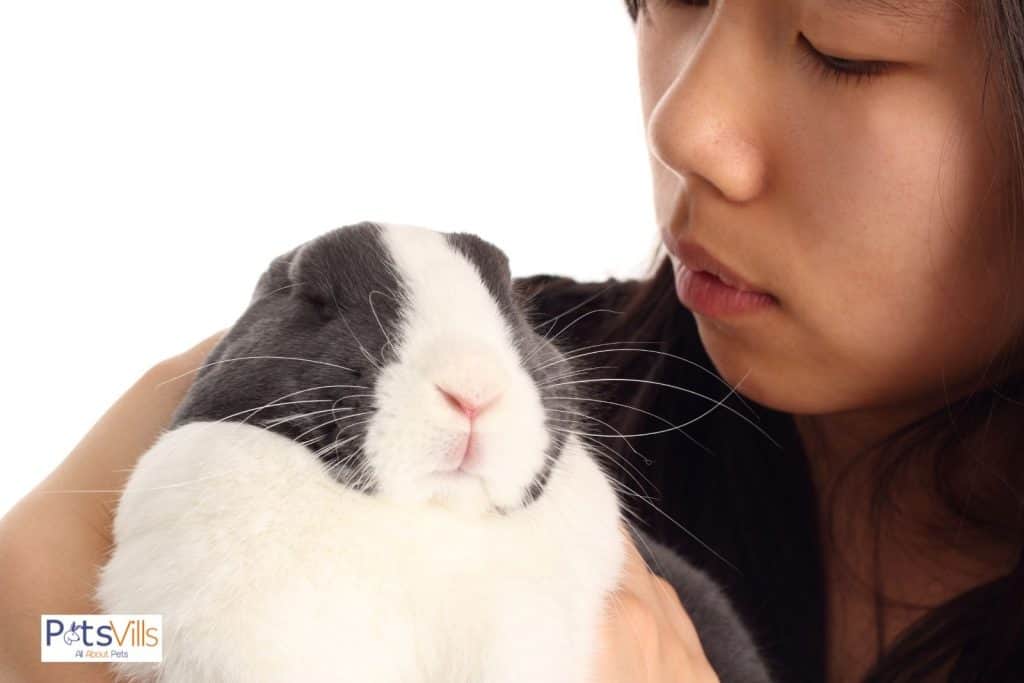
Dutch rabbits have short and glossy hair which is easy to maintain. Brushing the coat once a week will keep it in optimum condition, though, like most other bunny breeds, the Dutch rabbit goes through a seasonal molt. When this is occurring, you will have to up the frequency and can sometimes find yourself grooming your rabbit on a daily basis.
Dutch rabbits are an old rabbit breed, so they love to be outdoors. When taking your rabbit outdoors, there are a few things that you can do to make sure that they are protected.
The best thing which you can do is to be outside with them. That way, they can never escape from your yard, and nothing can get in to attack them. A pen or a run will allow your bunny to run around with protection.
While this breed likes to be outside, they are still not well suited for cold or hot weather. Monitor the temperature and take your rabbit back inside when needed.
The bigger the cage you can accommodate, the better, but Dutch rabbits do not need an extremely large cage.
A cage that is 24” x 24” will be enough to accommodate your rabbit as long as they get time to be outside of their cage and run around.
As Dutch rabbits are so active, they quickly mess up their cages. You should aim to completely clean out your bunny cage at least once a week, but daily spot-cleaning will also be needed.
Create a welcoming environment for your bunny by placing lots of hay in their cage. Dutch rabbits love to have a soft floor in their cage and a place where they can snuggle and sleep.
If you can also create a place where they can go to be alone, that will aid in their overall happiness. These bunnies love to be around people, but we all like some alone time now and then.
READ MORE: Everything About the Continental Rabbit
How Active Are Dutch Rabbits?
Dutch rabbits are very active bunnies. We recommend letting them loose in your home if you can.

While a large run will give them a lot of space in relation to their size, they love to run and hop around, so the larger the space they have, the better.
For this reason, we believe that a room in your home or your entire home is a great space for this breed of bunny. Before you let them out, you should make sure that your home is bunny-proof.
Dutch rabbits, much like every other breed, feel the need to chew on things to maintain their teeth. Rabbits like to chew on fabric and wires especially.
If there is something that you do not want to be chewed, then remove it from the room or place it where your bunny cannot reach it. You should also move anything which could be hazardous to your bunny.
When you let your bunny out of its cage, you should spend time with the bunny in the area where you have let it loose.
The more time you spend with your bunny, the more of a bond you will develop. Stay close to the floor, sitting or laying on the floor, and let the bunny come to you when it is ready.
What Should I Feed My Dutch Rabbit?
Rabbit diets are broken down into four main areas: pellets, hay, water, and vegetables.
The pellets contain a lot of the nutrients and minerals which your rabbit needs. You should aim to feed your rabbit 1/2 cup of pellets for every 5 pounds of rabbit weight. For a Dutch rabbit, this will work out to roughly 1/2 cup of pellets per day.
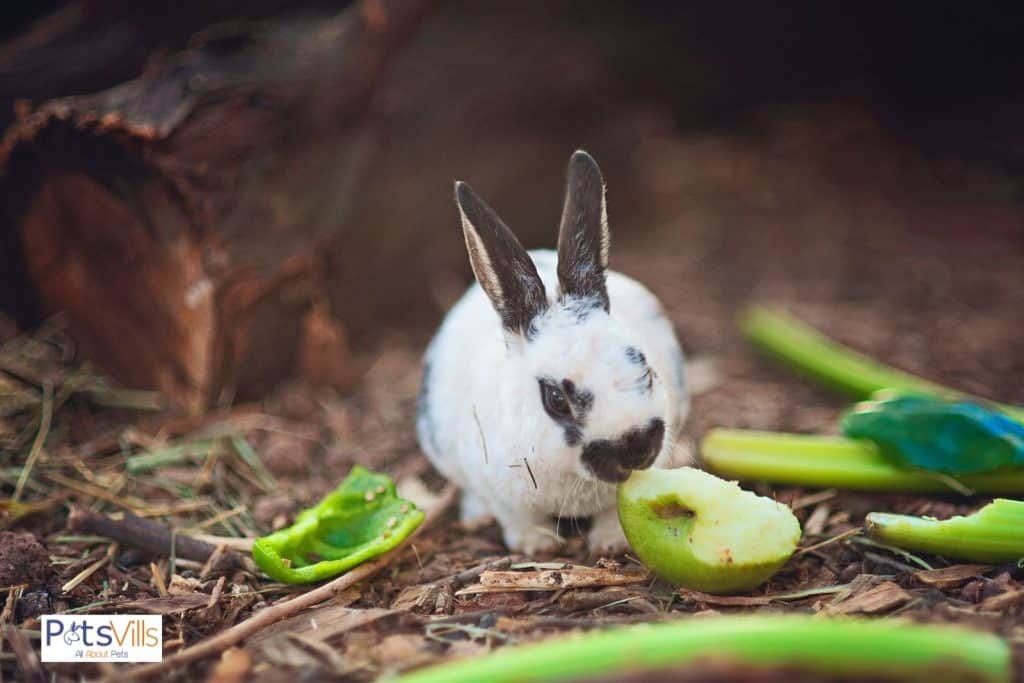
Vegetables should be added to provide a balanced diet.
Leafy greens are best, but you should aim to feed your bunny three different kinds of vegetables every day. A cup a day should be enough for a Dutch rabbit.
When it comes to hay, you can never give your Dutch rabbit enough. As long as they are eating it, you should continue to add more. Timothy hay will keep your rabbit in great shape.
The same goes for water. As long as your Dutch rabbit is drinking its water, you should continue to add more. You should also check the water dish regularly to make sure that it does not become contaminated and pose a health risk.
Healthcare for a Dutch Rabbits
Dutch rabbits are a very healthy breed, making them easy pets to take care of. There are no diseases that are specific to the Dutch breed, but there are some things to look out for which are common to all breeds.
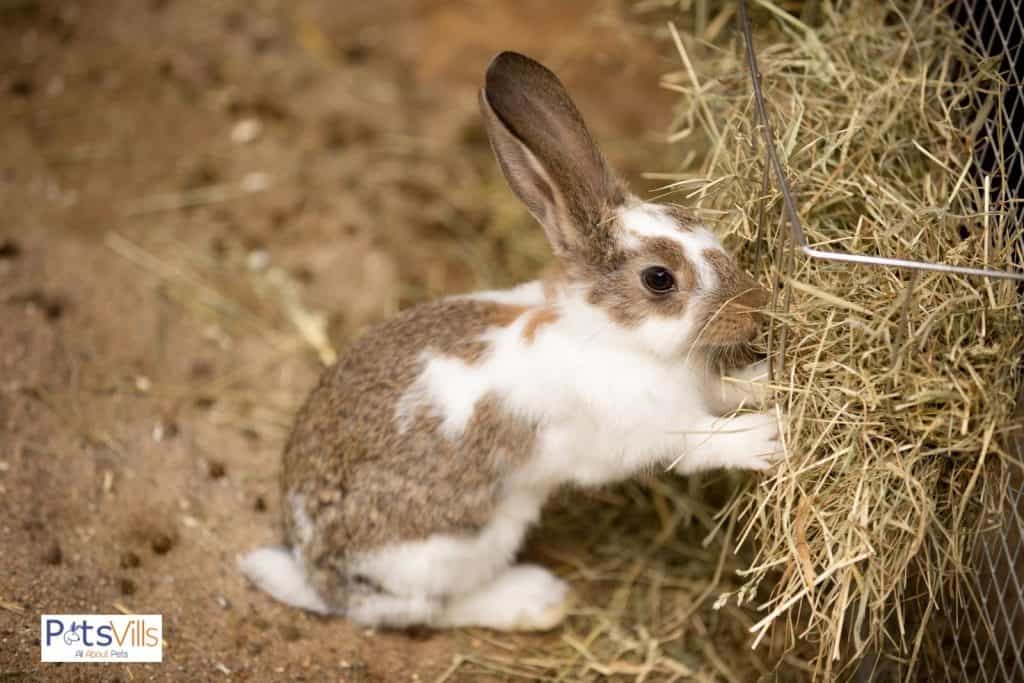
Teeth are an issue for most rabbits, but enough hay in their diets will help to grind the teeth down and keep them at the correct length.
Overgrown teeth can become a problem and result in a lot of mouth pain for your pet.
If you do not think that the hay is doing the job, then add in some sticks or branches for your bunny’s enclosure for them to chew on.
Keeping your rabbit’s cage clean is one of the best ways to keep your furry little friend in optimal health.
If you keep your friend’s cage clean, then there is no chance of their coat becoming soiled and bacteria growing. You should also schedule regular vet visits to check on their health.
Dutch Rabbits As Pets
Dutch rabbits are great pets but do need a lot of space to run around in and, for this reason, and not well suited to small apartments.
They love to be out of their cages often so only think about getting this breed if you have the space and time to allow them into the outside world regularly.
Dutch rabbits are great pets but do need a lot of space to run around in and, for this reason, and not well suited to small apartments.
Dutch rabbits are excitable creatures and will run around and play when they are out of their cages.
While this makes them great around children (who often want pets to ‘do something), it also makes them harder to handle for small children.
Adults and bigger children will do fine, but younger kids may need some supervision.
Dutch rabbits thrive in areas where there are lots of toys to play with. Balls and anything else which can be moved around will help to put their energy to good use.
They love to gnaw on toys, so be sure to check the material used. As they are so playful, they will benefit from toys that can be used to hide treats.
Having them play to find their food will help to burn off their surplus energy.
A great pet if you have the time to spend quality time with them.
Resources
- 1. CuriOdyssey. Dutch Rabbit – CuriOdyssey [Internet]. CuriOdyssey. 2021 [cited 2021 Dec 6]. Available from: https://curiodyssey.org/animals/our-animals/mammals/dutch-rabbit/
- 2. Cosgrove N. Dutch Rabbit [Internet]. Pet Keen. 2021 [cited 2021 Dec 6]. Available from: https://petkeen.com/dutch-rabbit/
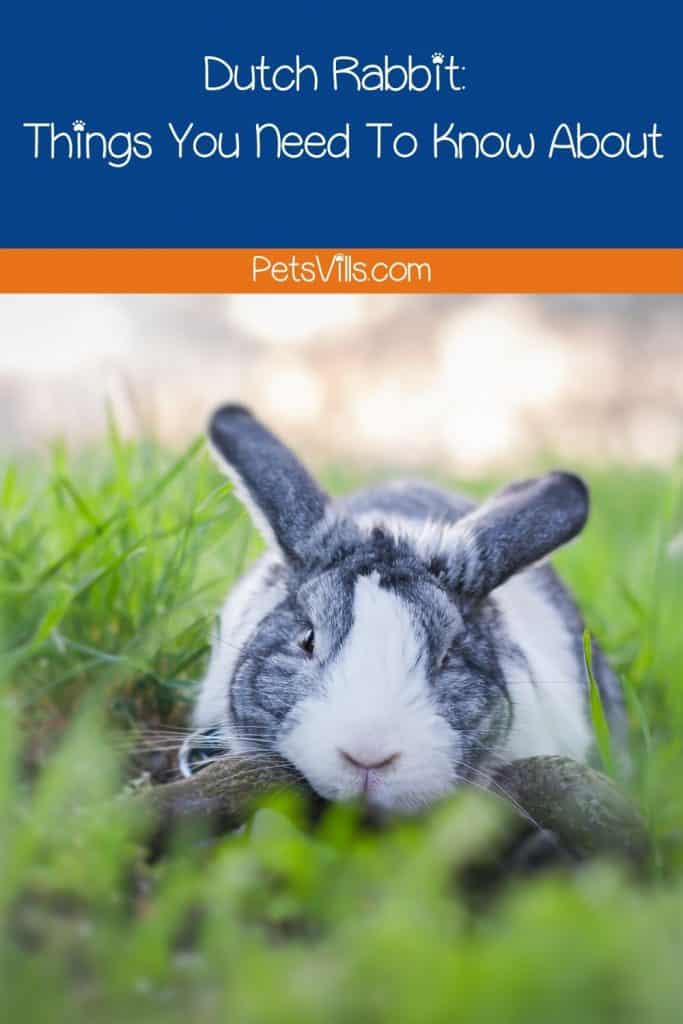
What do you think of Dutch rabbits? Aren’t they adorable? Let us know in the comments below!
Alina Hartley is a small-town girl with a ginormous love of bearded dragons. It all started with Winchester, a baby bearded who was abandoned at the shelter by his former owners because of a birth defect that caused one front leg to be shorter than the other. Alina originally went to the shelter looking for a guinea pig, but one look at Winchester and it was love at first sight. From that day on, Alina has dedicated her life to learning everything she can about bearded dragons. She loves helping new beardie parents start their incredible journey with these magnificent reptiles.
Follow her on:
LINKEDIN
TWITTER.
Read her latest articles HERE
Learn more about her HERE.

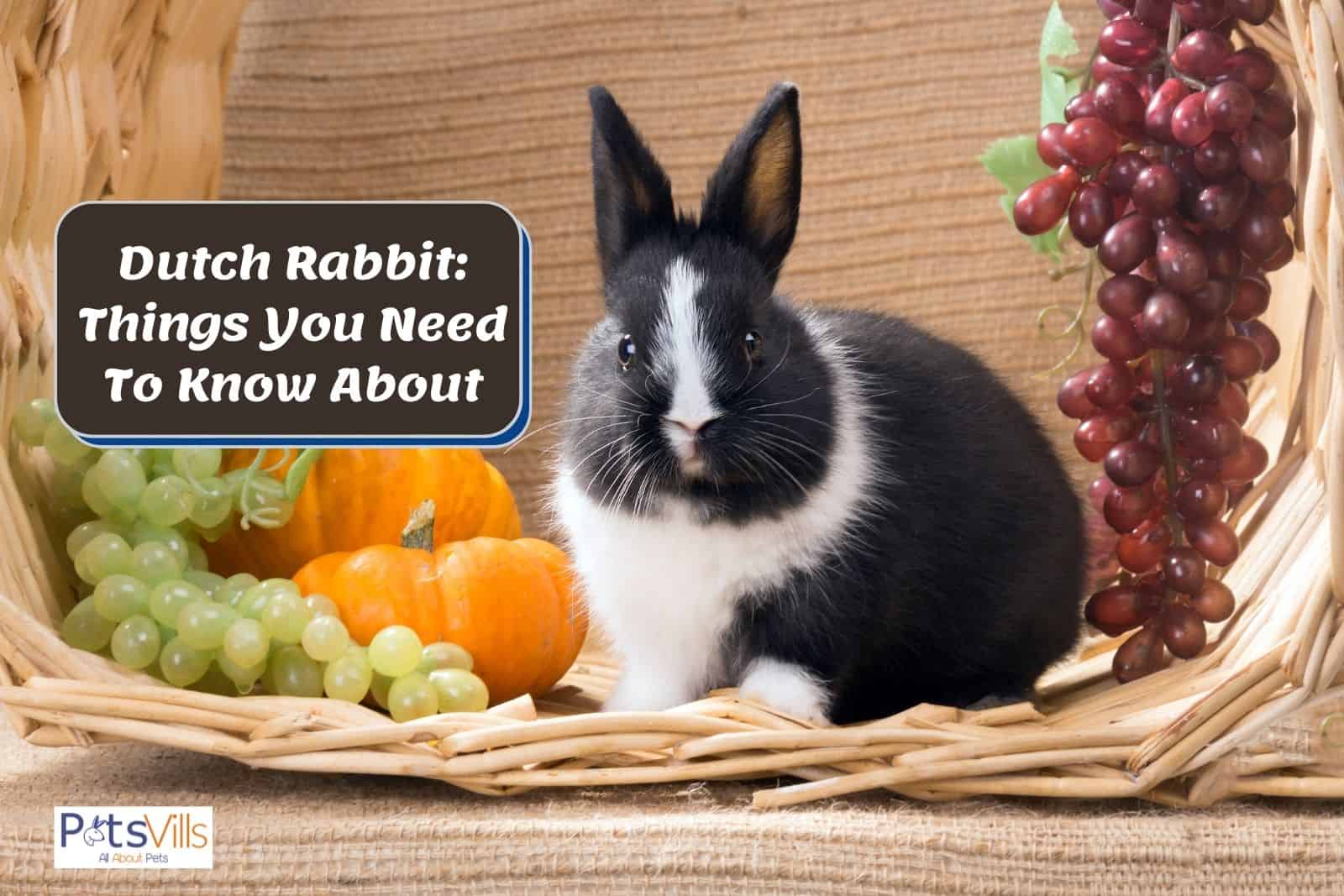

Omg I am 50 something have always wanted a bunny and a friend got 2 and they started fighting so they asked if I wanted one. I got to choose both boy’s. One was black and white and the other was a light brown. I chose the black and white! No regrets. He is soooo soft and cuddles so good.